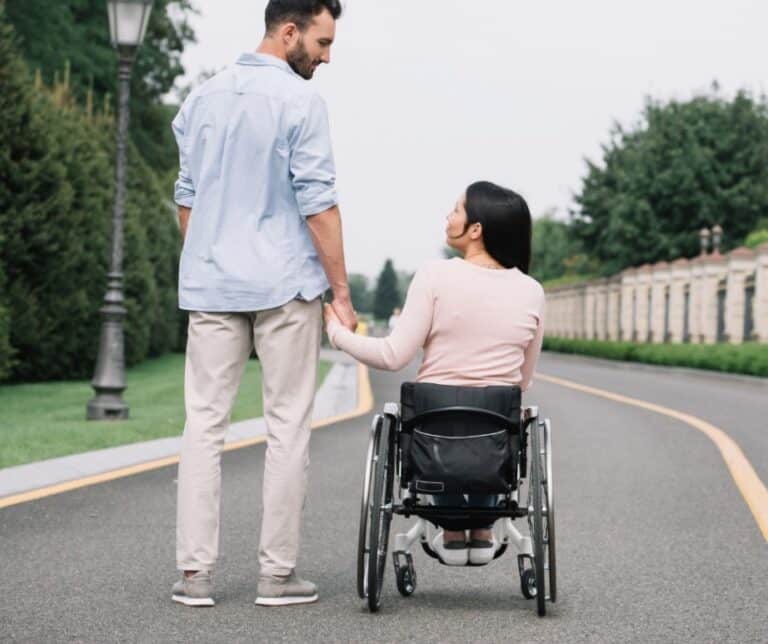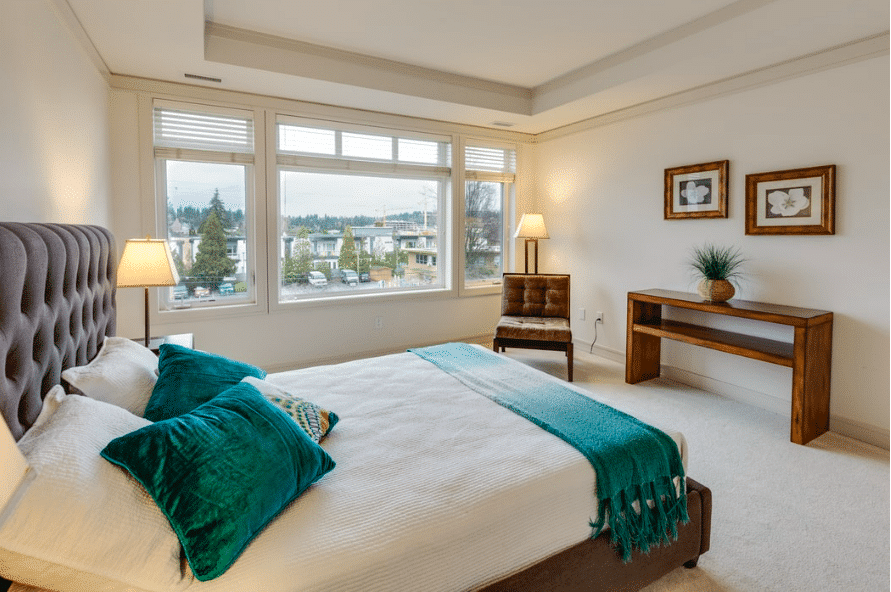Build NDIS Property in Suitable Areas
You might be able to get a good deal on a block of land right out of town that has recently been subdivided or a fancy new estate, but how practical are these areas going to be for your tenants? By building in an area that’s not centralised, you’re significantly reducing the number of prospective tenants.
To maximise your occupancy rate, consider building somewhere close to shopping centres, public transport and medical facilities. If an SDA participant cannot drive, there’s no way they’ll be considering your house if it’s not close to public transport or shopping centres.
Include Ensuites in all Bedrooms of Your SDA Property
If your NDIS property is designed to have multiple participants living together and room for carers, each bedroom must have its own ensuite. This is not part of the minimum SDA requirements, but it is highly advised.
Including a private bathroom for each tenant provides the type of privacy that everyone deserves. Building a house where the occupants have to share a bathroom may reduce the number of people willing to live there.
The Minimum Specialist Disability Accommodation Standards Aren’t Always Enough
Just because a design meets the minimum SDA standards doesn’t mean it’s practical for the tenants. This is particularly true for occupants requiring high physical support (HPS); they often require more room to move around comfortably or assistive technology.
A house can be designed and built according to SDA standards for HPS, but ticking the boxes on paper doesn’t necessarily tick all the boxes for these occupants. If care isn’t taken, a home designed for HPS may only be usable for Improved Livability or Fully Accessible.
Include Affordable Energy Sources
While providing solar energy isn’t a requirement under any SDA categories, it can go a long way to ensure the home is cost-effective for tenants, further reducing vacancy risk.
NDIS participants are looking for a suitable, cost-effective home to live in. Providing solar energy enables them to cut down on energy costs and make a home much more desirable for someone looking for a sustainable, affordable solution.
Build a Home, Not a Facility
The whole idea of SDA dwellings is to provide participants with a home and not just another facility to live in. Many people with disability have had to live in hospitals and aged care facilities because there’s been a drastic undersupply of suitable housing options. While they are ecstatic to have a place to call their own, they deserve to live in a house that feels like a home — and not like another hospital.
When designing an SDA dwelling, keep in mind the needs of those who may end up living there. Just because you’ve met the minimum Specialist Disability Accommodation standards doesn’t mean the house will be appropriate for your intended tenants.
Building highly sought after housing will become more essential as the SDA market expands.
If you need any guidance around what makes SDA housing a desirable home for NDIS participants, get in touch with us — we’re more than happy to answer any questions you may have.



